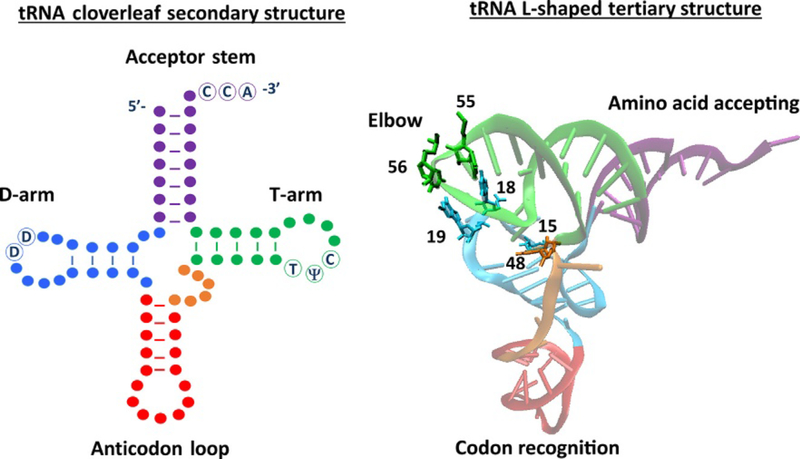Fig. 1.
Characteristic secondary cloverleaf structure of tRNA with relevant stem loops indicated and color-coded (left). L-shaped tertiary structure following the same color-coding with the amino acid-accepting arm, codon recognition arm, and the elbow indicated (right). The specific base pairs that are needed to form a stable L-shaped structure are numbered and shown as bonds in colors according to their position in the tRNA (base pairs include nucleotides 15 and 48, 18 and 55, and 19 and 56).

